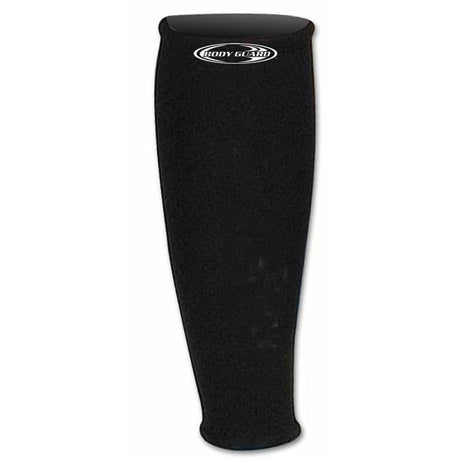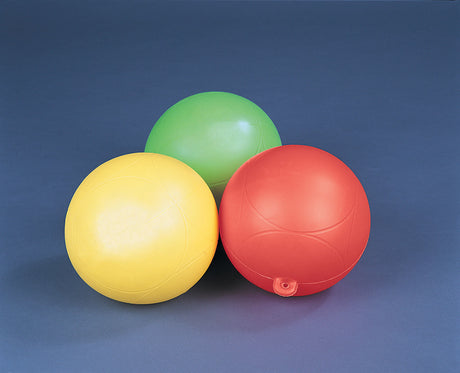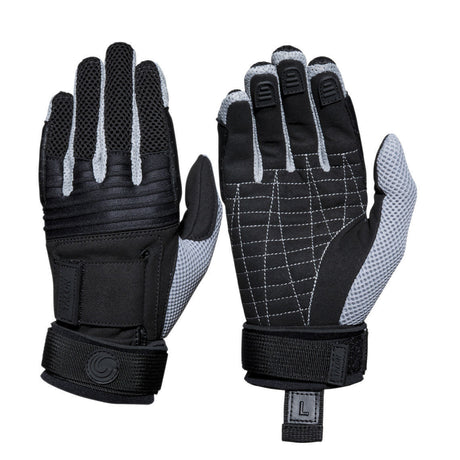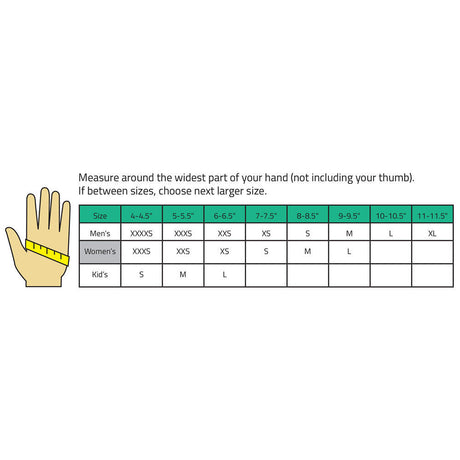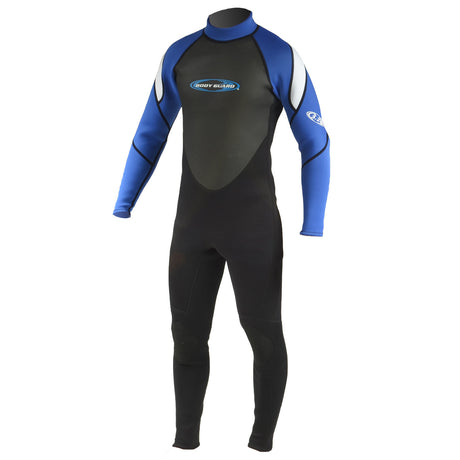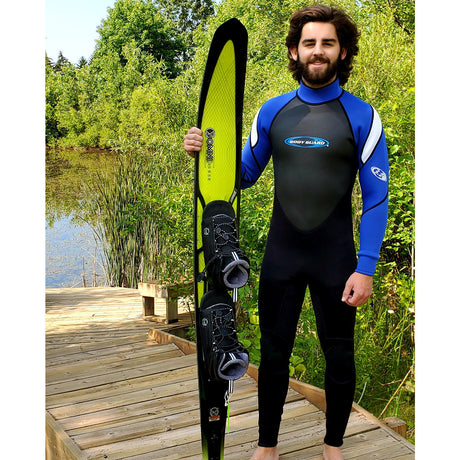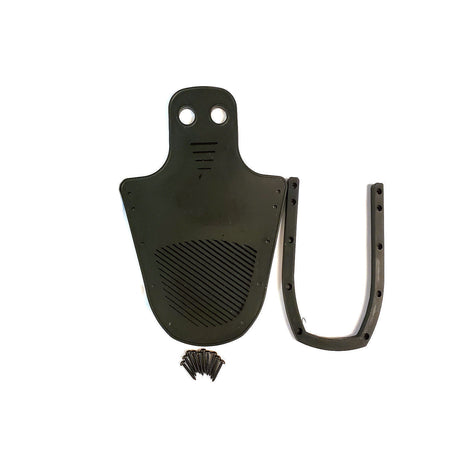Wakesurfing frees you from the tow ropes of wakeboarding, letting you carve and control your ride along the wake more easily. But you also tend to ride more slowly when wakesurfing, which means your inputs matter more -- lest you wipe out.
To enhance control, wakesurf boards come equipped with fins. These fins play a huge role in determining how your board handles. But what's the ideal setup when it comes to the number of fins, fin placement, and fin shape and size? Let's review.
How Many Wakesurf Fins is Best?
More fins isn't always better. Depending on your surf style, you may want fewer. But what's the ideal number of fins?
Single Fin Setup

Pictured: O'Brian Space Dust w/ Single Fin
A single fin setup features one fin located in the center of the tail of the board. This setup rides with a loose, carving style that's great for spin tricks and aerial maneuvers.
Pros:
- Trick Performance: A single fin allows for more freedom of movement, making this setup ideal for performing spin tricks and technical maneuvers.
- Mimics Skimboards: The single fin provides that float-y, free-riding feel of a skimboard, making it an ideal choice for riding on the shore and cruising smaller wakes.
- Classic Carving Feel: A single fin complements a loose, carving riding style, gliding easily through transitions without forcing snappy turns.
Cons:
- Limited Maneuverability: A single fin is less responsive to quick directional changes and sharp turns, demanding more balance and control from the rider.
- Speed: Can be slower and less dynamic compared to multi-fin setups.
- Versatility: Not ideal for performing advanced tricks and aerial maneuvers.
Twin Fin Setup

Pictured: Connelly Cuda w/ Twin Fin Setup
A twin fin setup has two fins placed on the outer edges near the tail of the board. This setup rides with a classic surf feel, providing good grip without making it difficult to break the fins free for more directional control.
Pros:
- Speed: Offers greater speed and acceleration due to reduced drag.
- Loose and Playful: Provides a looser feel, which is great for performing tricks and quick turns.
- Enhanced Carving: Allows for more aggressive and sharp turns compared to a single fin setup.
Cons:
- Less Stability: Can be less stable, especially at high speeds or in choppy water.
- Control: May feel slippery and harder to control for beginners.
- Straight-line Performance: Not as efficient for straight-line cruising.
Triple Fin (Thruster) Setup

Pictured: Connelly Ride w/ Thruster Fin Setup
A triple fin setup, or thruster, includes three fins: one larger center fin and two smaller side fins. This is the most common wakesurf fin configuration, maximizing speed and control.
Pros:
- Balanced Performance: Combines the stability of a single fin with the maneuverability of a twin fin.
- Versatility: Suitable for various riding styles, from carving to performing tricks.
- Control and Drive: Offers excellent control and drive, making it a favorite for many wakesurfers.
Cons:
- Increased Drag: More fins create more drag, potentially reducing speed slightly.
- Complexity: Slightly more complex to set up and adjust compared to single or twin fins.
- Cost: Typically more expensive due to the additional fins.
Four Fin (Quad) Setup

Pictured: Hyperlite Automatic w/ Quad Fins
A quad fin setup features four fins, usually two on each side of the tail. This setup is ideal for even more speed with a looser feel than a Thruster setup.
Pros:
- Speed and Drive: Provides a high level of speed and drive, excellent for aggressive surfing and advanced maneuvers.
- Hold: Offers a strong hold on the face of the wave, allowing for more confident and sharp turns.
- Versatility: Great for performing aerial tricks and maintaining control in various water conditions.
Cons:
- Less Stability: Can be less stable than a single or thruster setup, especially for beginners.
- Complexity and Adjustment: More fins mean more tuning and adjustment to find the perfect setup.
- Drag: While offering speed, the additional fins can still contribute to increased drag compared to a twin fin setup.
Wakesurf Fin Size: What's Best?

Pictured: Ronix Element Core Blunt Nose Skimmer
The number of fins are just one consideration. Fin size also plays a key role in handling. The logic behind fin size is simple:
- Large fins provide more stability and control. Better for beginners.
- Small fins provide more maneuverability. Better for advanced riders and tricks.
Fin size also correlates directly with the size of your wakesurf board. Larger boards come with bigger fins, and smaller surf- and skim-style wakesurf boards come with smaller fins.
Fins come in a Few Common Sizes
This ratio of fin size to board size is important: Larger boards have more surface area and greater inertia, so larger fins are required to handle all that mass and movement. The inverse is true, too: Small boards do better with smaller fins.
1" to 2" Fins
Often found on skim-style wakesurf boards. Suitable for experienced riders focusing on performing tricks.- Low Profile: Smaller fins create less drag, allowing for easier spins and tricks.
- Maneuverability: High maneuverability, making it easier to perform technical tricks like 360 spins and Shuv-its.
- Speed: Less drive and hold on the wave, requiring more effort to maintain speed.
2" to 3" Fins
Common on hybrid wakesurf boards. Ideal for intermediate riders, or those who want a versatile board for various styles.- Balanced Performance: Offers a good balance between stability and maneuverability.
- Versatility: Suitable for a variety of riding styles, from carving to moderate trick performance.
- Control: Provides decent control and drive without sacrificing too much agility.
3" to 4" Fins
Typically found on surf-style wakesurf boards. Best for beginners seeking stability, and for experienced surfers looking for a surf-like ride.- High Profile: Larger fins provide more stability and better hold on the wave.
- Drive and Speed: Excellent drive and speed, making it easier to maintain a consistent ride and perform powerful carves.
- Stability: Increased stability, making it ideal for straight-line cruising and larger, sweeping turns.
Ready to ride? We've covered all you need to know about wakesurf board fins -- now it's time to make sure you've got a board with fins that match your riding style and skillset.
Shop our collection of wakesurf boards here! We've got loads of options with different fin setups to ensure you're dialed in behind the boat.



